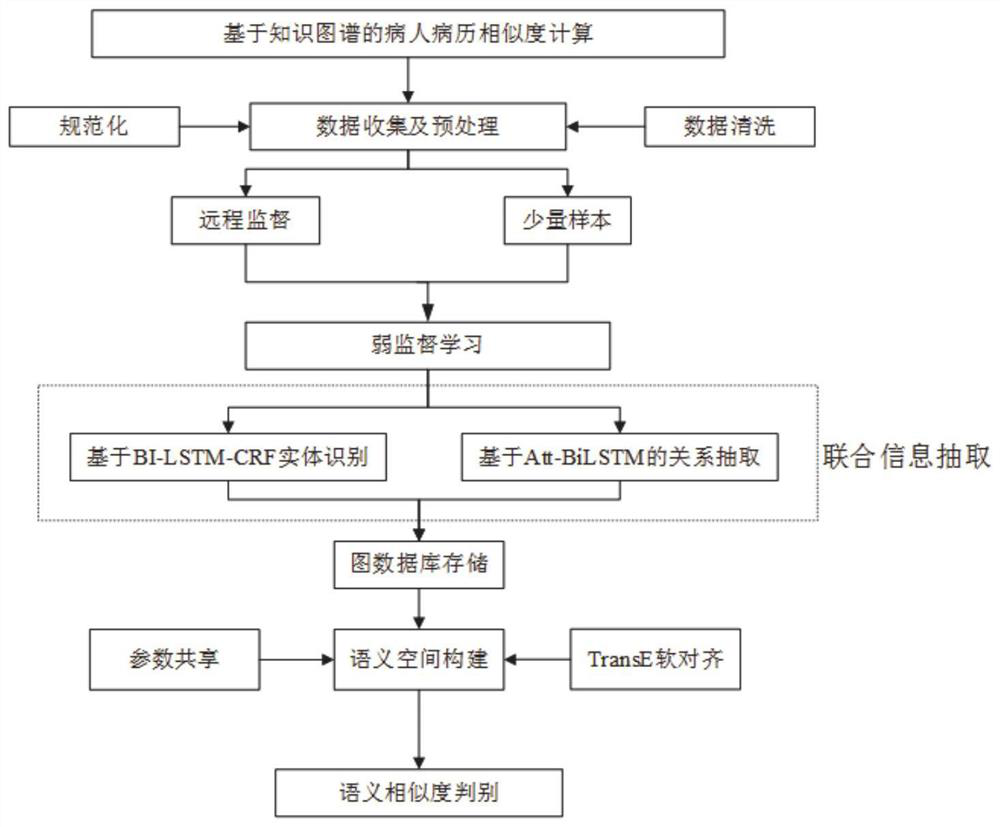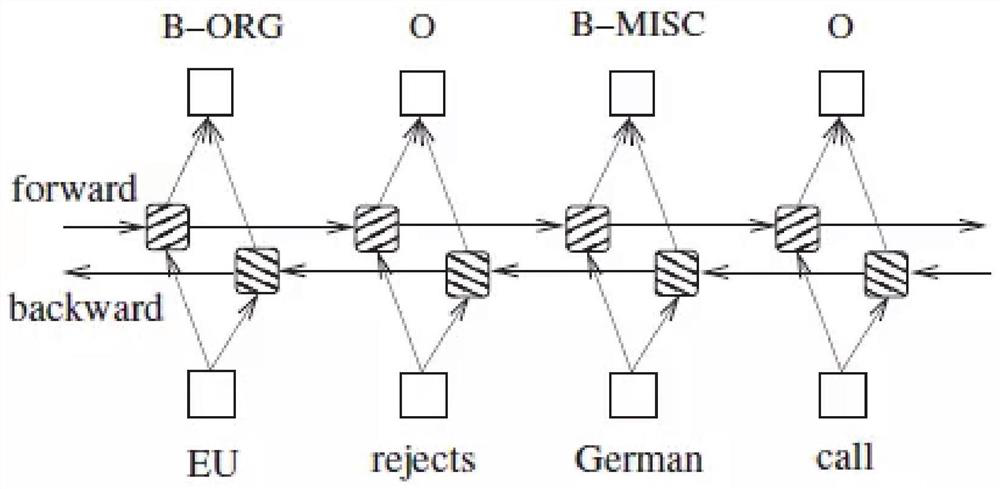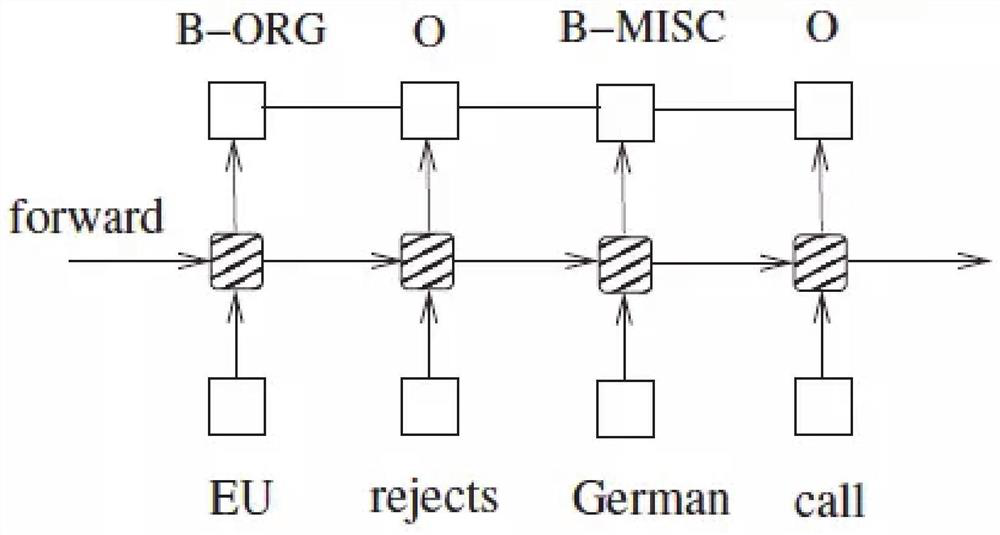Knowledge graph-based patient medical record similarity evaluation method and system
A technology of knowledge graph and similarity, which is applied in the field of text data processing, can solve the problems of error propagation, time-consuming and labor-intensive, triple information loss, etc., and achieve the effect of improving recognition accuracy, reducing tedious work, and avoiding error propagation
- Summary
- Abstract
- Description
- Claims
- Application Information
AI Technical Summary
Problems solved by technology
Method used
Image
Examples
Embodiment 1
[0038] Such as figure 1 As shown, Embodiment 1 of the present invention provides a method for evaluating the similarity of patient medical records based on knowledge graphs, including the following steps:
[0039] First, a bidirectional LSTM network (BI-LSTM-CRF) with a conditional random field layer is used for entity recognition, and the obtained medical entity type is represented by a knowledge vector;
[0040] Then, the attention mechanism (Att-BiLSTM) is added to the BI-LSTM-CRF network, and a joint knowledge extraction network (JKENet) is constructed to extract the relationship while recognizing the entity, which is used in the knowledge map. Rapid construction of triples, represented by joint knowledge vectors;
[0041] Finally, the knowledge vectors are merged into the same semantic space by using joint vectors, and the similarity discrimination is realized by calculating the semantic distance between entities.
[0042] In detail, include the following:
[0043] In ...
Embodiment 2
[0088] Embodiment 2 of the present invention provides a patient medical record similarity evaluation system based on a knowledge map, including:
[0089] The data acquisition module is configured to: acquire the text data of the patient's medical record and perform preprocessing;
[0090] The information extraction module is configured to: use a joint information extraction model based on weakly supervised learning to perform entity recognition and entity relationship extraction on the preprocessed data, and represent the obtained medical entity type with a knowledge vector;
[0091] The triplet building module is configured to: construct triplets in the knowledge map according to the obtained entity relationship, and use a joint knowledge vector to represent it;
[0092] The similarity discrimination module is configured to: use the joint vector to merge the knowledge vectors into the same semantic space, and perform similarity discrimination by calculating the semantic dista...
Embodiment 3
[0095] Embodiment 3 of the present invention provides a computer-readable storage medium on which a program is stored. When the program is executed by a processor, the method for evaluating the similarity of patient medical records based on knowledge graphs as described in Embodiment 1 of the present invention is implemented. steps, the steps are:
[0096] Obtain the text data of the patient's medical record and perform preprocessing;
[0097] The joint information extraction model based on weakly supervised learning is used to perform entity recognition and entity relationship extraction on the preprocessed data, and the obtained medical entity types are represented by knowledge vectors;
[0098] According to the obtained entity relationship, the triples in the knowledge map are constructed, and the joint knowledge vector is used to represent it;
[0099] The knowledge vectors are merged into the same semantic space by using joint vectors, and the similarity of medical recor...
PUM
 Login to View More
Login to View More Abstract
Description
Claims
Application Information
 Login to View More
Login to View More - R&D
- Intellectual Property
- Life Sciences
- Materials
- Tech Scout
- Unparalleled Data Quality
- Higher Quality Content
- 60% Fewer Hallucinations
Browse by: Latest US Patents, China's latest patents, Technical Efficacy Thesaurus, Application Domain, Technology Topic, Popular Technical Reports.
© 2025 PatSnap. All rights reserved.Legal|Privacy policy|Modern Slavery Act Transparency Statement|Sitemap|About US| Contact US: help@patsnap.com



